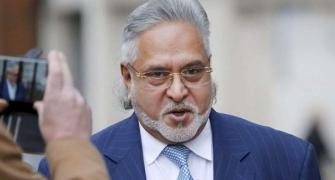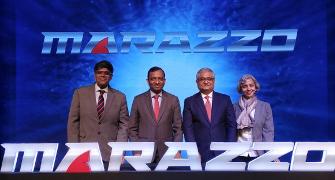While consumers will be paying a higher upfront cost for smart metering, the share in the efficiency gains could more than offset this higher spend

A van circles a residential or commercial complex and logs the exact number of units that various electrical appliances inside have consumed at any time of the day.
This reading is then transmitted to a data centre where it is automatically billed and logged into a digitally accessed account.
A distant dream for the modern urban planner? Not if some recent initiatives are anything to go by.
Recently, the National Democratic Alliance government announced that it had finalised the first tranche of a bulk tender for smart meters. Domestic players, such as Larsen & Toubro and Jay Auto, have indicated their interest in supplying such meters, as have some overseas suppliers, Indonesian company PT Hexing among them. Energy Efficient Services Ltd (EESL), the government-owned energy services company, conducted the bulk tendering under which five million meters will be supplied to power distribution companies in Uttar Pradesh and Haryana.
Part of the first tranche of meters will go to the Dakshin Haryana Bijli Vitran Nigam Ltd (DHBVN), the power distributor in Gurgaon.
This is in keeping with Union Minister Piyush Goyal’s 2015 announcement that the millennium city would be the country’s first smart power city.
DHBVN’s plan offers pointers to the future. The distribution utility touches more than 500,000 consumers, across 600 housing societies, 35 villages, over 50 municipal colonies and even 75 unauthorised colonies, so the scale of operations is huge.
All 11 KV lines and other low-transmission (LT) lines will be shifted underground and a 2,500 km duct will be constructed to accommodate the overhead infrastructure (wires and more than 7,000 poles, transformers and feeders).
The maintenance system will be replaced by the Supervisory Control and Data Acquisition (Scada) software, which some distribution companies like Tata Power Delhi Distribution already use in Delhi.
In fact, transmission companies apply Scada on a wider scale for intra-state and inter-state monitoring of sub-stations, which also enables metering, monitoring, and even fixing a fault without disrupting supply from the substation.
For Gurgaon alone, the implications of the smart grid is huge.
Theft accounts for about 20 per cent of the city’s power distribution networks, which technology can now help plug.
Smart metering in Gurgaon is expected to save a substantial 120-150 Mw of power a day by 2022.
Meters procured under the EESL tender will also be supplied to cities like Kanpur and Lucknow in Uttar Pradesh. According to 2016 cost estimates, the Kanpur project is likely to cost Rs 320 crore.
Similar initiatives are being planned in Pune and Gujarat.
Although most of India still uses manual meter readings, the Automatic Meter Reading or AMR, which records the reading at the back-end rather than at the customer’s premises, is already in vogue in some cities, as is the Advance Metering Infrastructure (AMI), which are considered the building blocks of smart grids.
Apart from streamlining the metering process, these technologies help monitor such variables as load, power outages and so on and, importantly, save power consumption.
“The advancements in metering technology have opened up huge potential for consumers to optimize the use of electricity,” explains Brajesh Singh Bhaduria, chief executive officer, Essel Utilities.
The company, which has been in power distribution business since 2013, has used AMR and AMI in Nagpur and Muzaffarpur where it has distribution franchisee licences.
Conceptually, a smart meter linked to a smart grid can be used to enable consumers to operate home appliances remotely and check which of those are using maximum electricity and opt to use them during off-peak hours.
This facility could come in handy once the time-of- day tariff concept enabling dynamic pricing of power based on demand and supply is in place.
Just as power tariffs are worked out based on consumption slabs, smart meters enable such dicing based on timing.
“You can slice data like during this time to this time because you consume this much energy, so this is the rate. Based on that you can decide to use your washing machine and other appliances when the power is cheaper,” explains Sanjeev Sharma, country head and managing director, ABB India.
"Last month, ABB signed up with IIT Roorkee for a smart power project on campus. They are creating a green campus (based on renewable energy) and have smart metering as well. In such an instance, the microgrid system prioritises and keeps selecting the cheapest and greenest source of power depending on the priority that is programmed," Sharma explained.
The system can also be programmed to create priority and non-priority loads - especially now that renewable power has priority in what is known as the “merit order of dispatch” - a way of ranking available sources of energy - under government norms.
This technology also addresses the question of unpredictable supply that is a chronic problem with green energy - for solar, when the atmosphere is cloudy, for wind, when the atmosphere is calm.
For instance, if the solar power availability suddenly drops 30 per cent, the system adjusts demand to lower the load automatically, and still run the core business with the chosen source of power, Sharma explains.
“Technology-wise it’s pretty simple,” he adds. “The only thing is the investment. All distribution companies are regulated and power regulators control how much money they can spend on new technology.
"Whatever they spend they have to recover. Since most consumers are price sensitive, the technology flow takes time.”
Haryana is a case in point. The smart grid project was originally conceived by the state government in 2011-12 but funding arrangements between the state and the Centre and deciding the nodal agency for executing the project delayed the work.
But falling costs could hasten adoption. The average cost of a smart meter alone, including the communication module and infrastructure software, was Rs 6,000-8,000.
“With the latest EESL smart metering tender, we have seen drastic reduction in the average cost of smart metering infrastructure.
"Today, a single phase meter with a GPRS module costs Rs 2,305 with an implementation cost of Rs 1,728 (without taxes) with five years of support,” says Bhaduria.
All the same, it is indisputable that consumers will be paying a higher upfront payment for smart metering.
But the share in the efficiency gains in the longer run could more than offset this higher spend.
Photograph: Vivek Prakash/Reuters










